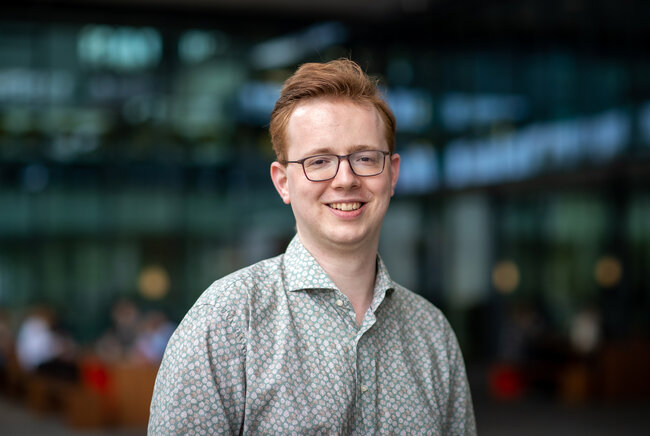Engineering time and length scales in supramolecular hydrogels
Martin Rutten defended his thesis at the Department of Biomedical Engineering on February 22.

For his PhD thesis, Martin Rutten focused on mimicking the intriguing physical properties of the extracellular matrix (ECM) of natural tissue. By using supramolecular polymers and synthetic stress-reinforced materials, complex systems are developed that mimic the properties of natural tissues. These synthetic materials can influence the behavior of cells, depending on the properties chosen, and provide new opportunities for designing advanced biomedical materials and tissues.
The human body is a masterpiece of complexity, in which a network of cells is supported by an equally intriguing network of natural tissue. This tissue, known as the extracellular matrix (ECM), forms an essential part of various biological structures, from bone to skin and everything in between. The ECM is known for its remarkable physical properties through which it supports cells, transmits signals and forms and maintains tissue structures.
The ECM consists of a complex network of molecules, with small building blocks that connect to form polymer chains. These polymer chains then form larger networks through noncovalent interactions. The result is a structure that exhibits both mechanical strength and dynamic properties, such as stress stiffness and stress relaxation. These properties are crucial to the functioning of various tissues in the body.
Designing materials that can mimic these unique properties of the natural ECM poses a challenge in biomedical research. It allows researchers to create synthetic ECMs and in vitro tissues that can support and direct cells, which is vital for various medical applications, including regenerative medicine and tissue engineering.
Supramolecular polymers
One promising material that has emerged in this field of research are supramolecular polymers. These polymers consist of individual building blocks that can come together through noncovalent interactions to form large polymers and networks. As a result, these materials exhibit intrinsic dynamic and adaptable properties at different length scales, which is similar to the dynamics of natural ECM.
In his research, Rutten combined several supramolecular building blocks with a synthetic stress-reinforced material to create complex systems that mimic the properties of natural tissues. Through the controlled assembly of different networks, Rutten developed systems with both stress-reinforcing and stress-releasing properties similar to those of natural ECMs.
These synthetic materials were also found to be able to influence the behavior of cells. Depending on the properties chosen, cells were able to adhere and proliferate in these systems, demonstrating how precise control over mechanical and dynamic properties can lead to functionality at the cellular level.
By carefully combining different building blocks, Rutten was able to approach the complexity of natural tissues and mimic the ECM in a synthetic way. This opens new possibilities for controlling cell behavior and developing advanced biomedical materials and tissues with tailored properties. It is a step forward in understanding and exploiting the intriguing physical properties of the natural tissues that comprise us.
Title of PhD thesis: “Engineering time and length scales into supramolecular hydrogels”
Supervisors: Patricia Dankers and Paul Kouwer (Radboud Universiteit)